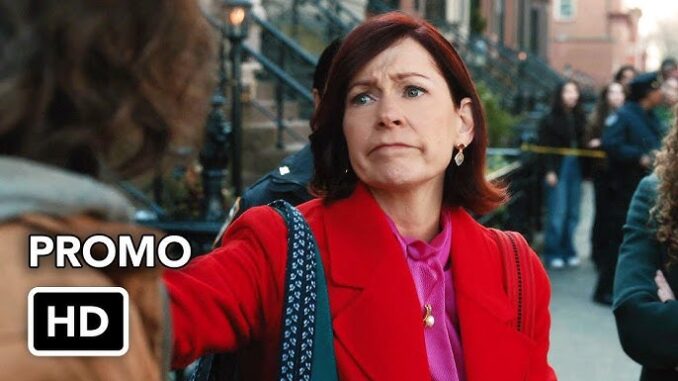
Guest Stars Galore: How Elsbeth Fuses Big Names with Bold Storytelling in Every Finale
From the chaotic, charming brilliance of Elsbeth Tascioni herself to the labyrinthine cases she untangles, Elsbeth has carved out a unique niche in the procedural landscape. It’s a show that thrives on the unexpected, on subverting expectations, and on the delightful disarming nature of its protagonist. But where the series truly elevates its game, transforming intriguing episodic mysteries into memorable events, is in its finales. Here, Elsbeth consistently demonstrates a masterful fusion of "big name" guest stars with "bold storytelling," transforming what could be mere celebrity cameos into pivotal narrative engines that deepen the show's thematic concerns and push its unique brand of quirky crime-solving to its most exhilarating limits.
The Elsbeth formula, at its core, is a Columbo-esque "howdunit," where the killer is revealed early, and the suspense lies in how Elsbeth, with her unconventional observations and seemingly scatterbrained charm, will expose them. This structure, however, demands more than just a clever perpetrator; it requires a character whose motivations, psychology, and public persona are complex enough to withstand Elsbeth’s relentless, albeit polite, scrutiny. This is where the "big names" come in. These aren't just famous faces; they are often actors known for their gravitas, their ability to embody intricate characters, or even their real-world cultural significance, which Elsbeth cunningly weaves into its narrative fabric. The casting isn't just a draw; it's a deliberate artistic choice that serves the "bold storytelling" by providing a rich, pre-packaged canvas for the episode's central conflict.
A prime illustration of this symbiotic relationship can be found in the series' inaugural season finale, "A Fitting Finale." The episode features none other than the legendary Linda Lavin as Gloria, a revered, yet ruthless, Broadway director whose past is as storied as her stage triumphs. Lavin, a Tony Award winner and veteran of countless stage and screen productions, brings an inherent theatricality and commanding presence to the role. Her "big name" status immediately establishes Gloria as a formidable figure, a woman accustomed to holding sway, both on and off the stage. This pre-existing persona allows the show to bypass lengthy exposition, immediately immersing the audience in the world of high-stakes theater and the cutthroat ambition that can lurk beneath its glittering surface.
But Lavin's role is far more than a mere star turn; it is the lynchpin of the episode's "bold storytelling." Gloria's motivation for murder—preserving her artistic legacy and silencing a threat to her professional future—is inherently dramatic and deeply theatrical. She embodies a kind of villainy that is grand, almost operatic, mirroring the very art form she dedicates her life to. The finale's narrative isn't just about solving a murder; it’s a keen exploration of ego, artistic integrity, and the lengths to which individuals will go to protect their perceived greatness. Lavin’s performance is a masterclass in controlled intensity, her frosty elegance and razor-sharp wit serving as a perfect foil to Elsbeth’s disarming inquiries. The verbal sparring between them becomes a performance in itself, with Elsbeth’s seemingly naive questions chipping away at Gloria’s carefully constructed façade.
Furthermore, Gloria’s character, brought to life by Lavin, allows the finale to delve into meta-commentary on performance itself. Elsbeth, in her own way, performs a role – the charming, slightly clueless outsider – to gain access and gather information. Gloria, as a director, orchestrates performances, both on stage and in her life, to control narratives and manipulate perceptions. This thematic resonance elevates "A Fitting Finale" beyond a standard crime story, transforming it into a nuanced character study wrapped in a clever mystery. The "big name" talent of Linda Lavin doesn't overshadow the story; it amplifies its themes, adding layers of authenticity and dramatic weight that a lesser-known actor might struggle to achieve with the same immediate impact.
Looking ahead, this strategy is poised to become a defining characteristic of Elsbeth's finales. By consistently recruiting actors of significant caliber, the show ensures that its episodic antagonists are not just plot devices, but fully realized characters whose clash with Elsbeth feels significant, personal, and profoundly entertaining. These guest stars enable the "bold storytelling" by allowing the series to explore diverse facets of human ambition, obsession, and the peculiar corners of New York City life. Each finale, therefore, promises not just the resolution of a crime, but a deeper dive into the human condition, viewed through the wonderfully askew lens of Elsbeth Tascioni.
In conclusion, Elsbeth's finales are a masterclass in the strategic deployment of talent. The "guest stars galore" are not merely celebrity window dressing; they are integral components of the show’s "bold storytelling," providing the psychological depth, thematic richness, and dramatic gravitas required to make each concluding episode a standout event. By fusing big names with compelling narratives, Elsbeth consistently delivers finales that are not only satisfying mysteries but also profound explorations of character and consequence, solidifying its place as one of television’s most inventively charming procedurals.
